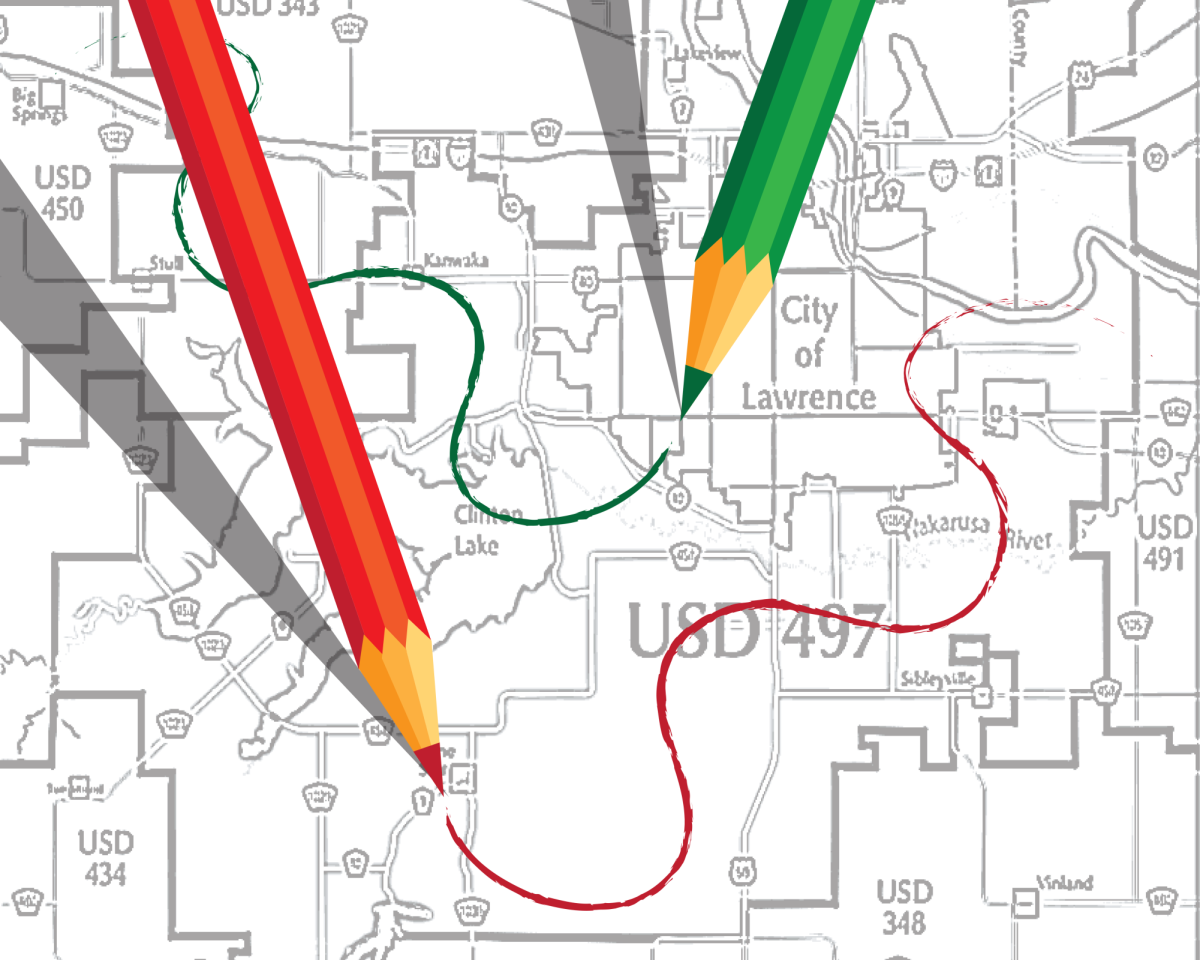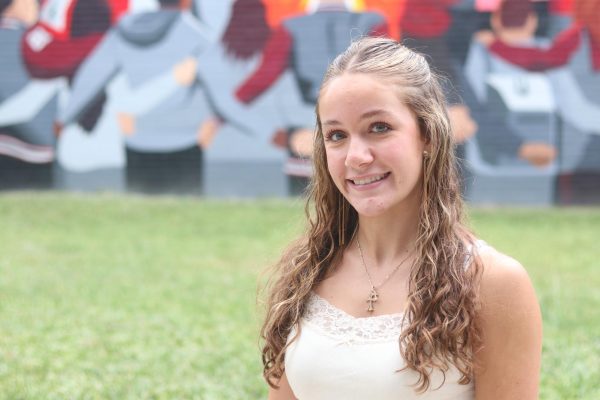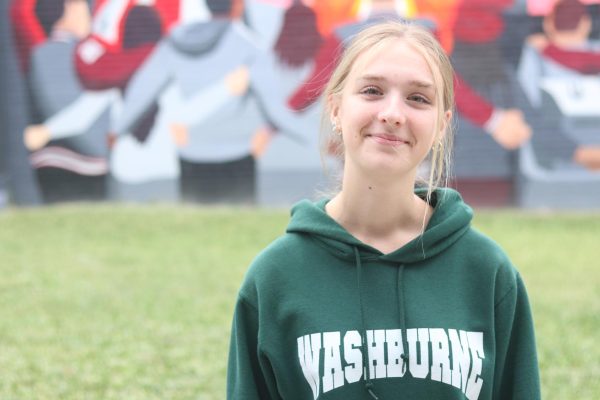Less than two weeks away from community input sessions, the USD 497 Boundary Advisory Committee still faces uncertainty about data that demonstrates the impact of its plans.
The school board on Monday agreed to spend up to $45,000 to bring in RSP & Associates to provide further analysis after BAC members said they needed additional support the previous week.
The committee has focused its work around two options, but an analysis of BAC data by The Budget shows significant challenges for each plan in accomplishing goals of balancing enrollment and demographics. Neither option successfully addresses socioeconomic imbalances and only one of the options balances enrollment numbers between the schools.
Interviews with committee members also reflected an unclear understanding of some of the data. And committee members have said they need to know more, including updated projections for future years.
“The committee wants to present the best versions of each option to the public to get their feedback,” said Anne Costello, a school board and BAC member. “We do not want them distracted by these obvious issues that we know we are working to correct. That is why RSP’s help is important.”
The committee is charged with finding a way to balance the enrollment differences between FSHS and LHS. Currently, LHS has about 300 fewer students than FSHS — a gap that is expected to persist in coming years. That gap prompted school board president Kelly Jones this summer to call for the committee to review high school boundaries for the first time since Free State opened.
“We need to work toward growing LHS enrollment,” Jones said back in June. “The boundary shifts may not need to be dramatic to achieve the desired outcome of a balanced high school enrollment and distribution of students by socioeconomic status.”
Last year, the BAC looked at middle and elementary school boundaries with the support of RSP. This time around, school board members had hoped to do that work in house. The committee is tasked with bringing a recommendation to the school board in December with the goal that board members could take action early in January.
Community members are invited by the BAC to attend public input sessions, currently scheduled for:
- 6-7:30 p.m. Nov. 13 at Lawrence High School
- 6-7:30 p.m. Nov. 14 at Free State High School
The committee is currently split into two work groups: one focused on each option. The first group supports what is referred to as the L boundary.
While the current boundary runs across 15th Street in a straight line, with the L boundary, anyone east of Massachusetts Street would also attend LHS. According to a data analysis by The Budget based on the provided percentages and numbers, this would flip problems, leaving Free State smaller and serving about eight percentage points more economically disadvantaged students than LHS.
The five-year projections show that this option would eventually lead to LHS having almost 200 more students, which would reverse the current enrollment gap. In addition, it shows that about 6.5 percent of Free State’s projected population would include students new to its boundaries. However, that figure is confusing because the maps reflect only LHS gaining new territory as part of the boundary changes.
The other option is a feeder school approach where Southwest and Billy Mills middle schools would feed into LHS while Liberty Memorial Central and West would attend FSHS. Currently, Southwest and Liberty Memorial split between the two high schools.
This would equalize enrollment but not demographics between the two schools, according to projections provided to the BAC. The district has long avoided an east-west split between the schools as it would exacerbate income inequalities. Central and Billy Mills — the two east-side middle schools — serve more students from low socioeconomic homes.
With the Option 2 split, the district would go from a 12.5 percentage point difference in students qualifying for free or reduced-price lunches to a difference of 8.3 percentage points. However, Free State would find itself serving a greater number of low-income students for the first time.
In addition, the option would mean that students who could literally live across the street from Lawrence High would attend Free State, leaving committee members interested in looking at further changes. One of the BAC goals is to have RSP look at these worries and find ways to make data-based changes.
“I am interested to see what RSP is able to come back with,” Costello said. “Once the committee has been able to review that data, I know I will feel more comfortable going into the public input sessions.”
Understanding the Impacts
The discussions come at a time when declining enrollment at LHS has forced the elimination of teaching jobs with impacts to programs. Fewer students have led to fewer music teachers, larger class sizes and the loss of lower-enrollment programs like German, which continues in a limited form as an online-proctored class.
The BAC needs to understand the impact boundary changes would have on all students and ensure that there are fewer disparities between the high schools, LHS CTE teacher Zach Saltz said.
“Equity and access need to be at the center of every decision made by the committee,” said Saltz, who is chairman of the CTE department. “The point of public education is to ensure that every student has the same access to high-quality education, regardless of where they live.”
LHS language department chairwoman Carolyn McKanna, who has first-hand seen the effects of lower LHS enrollment, said that if LHS is going to continue to support a higher-needs population, it needs the support to do so.
“I am here to teach whoever comes through the door and will welcome whatever demographics we have here,” McKanna said. “However, if there are going to be disparities between the schools with regards to student needs, then moving forward the two schools cannot be compared just on the basis of student enrollment numbers when they are determining need for teaching and support positions.”
Data Challenges
Another thing the BAC is grappling with is the number of students who would be affected by boundary changes.
Projections show the proposed changes could shift the school boundaries for as many as 970 students although district officials could make those changes incrementally. For example, they could begin by applying the changes to only the incoming freshman class, and exceptions could be made for siblings of current high school students.
Yet, the data has often been confusing or misinterpreted when it comes to understanding the number of students impacted. For example, Dr. Larry Englebrick, deputy superintendent and a member of the BAC, was among those unclear about how to interpret data on charts showing the percentage of students who could change schools.
“I think there is some confusion about if the numbers represent students who are entering or exiting a building and it would be good to get that resolved,” BAC member and College & Career Center Principal Mark Preut said.
Many had interpreted on charts a line describing the students who would move schools — “Yes – Student would change school” — to mean that students would be leaving that school’s boundaries. The opposite is true, The Budget has found.
“I think how they’re presenting the data is that it can be left up to interpretation, which is really not what we should do,” said BAC member Emerson Hoffzales, president of the Lawrence Education Association. “How important is it not to make changes that are super disruptive, right? Because the one benefit of option one is you’re not moving as many kids. With option two, you get where you need to be, but it’s a massive movement of kids between buildings.”
Another solution that has been debated was making the district a true feeder school system, where all fifth-graders in an elementary school would go to the same middle school and all eighth-graders in a middle school would go to the same high school.
With RSP being called in to offer additional feedback, the BAC has added a new meeting for Nov. 6, in hopes of discussing updated data.
At Monday’s school board meeting, board members and Englebrick discussed the challenges of the current timeline. That could mean changes could be pushed off until the 2026-2027 school year instead.
“It is much more important for us to do this correctly and spend the time to make sure what we’re doing is right than to stay to a timeline that we created,” Englebrick said. “We can’t go on indefinitely, but if we need a little bit of time to do this right, we must take that time.”
The Budget will continue to follow updates to the data and future meetings.






